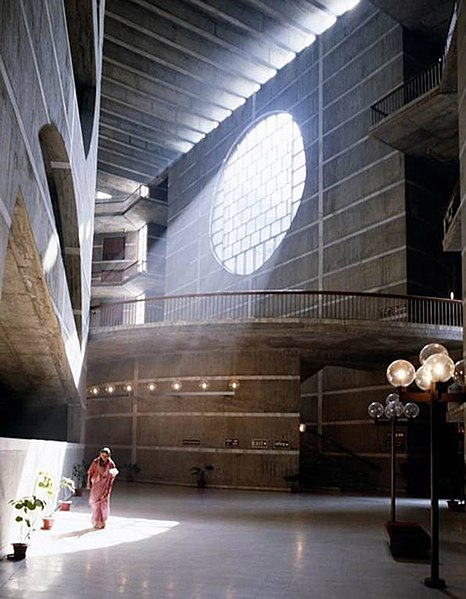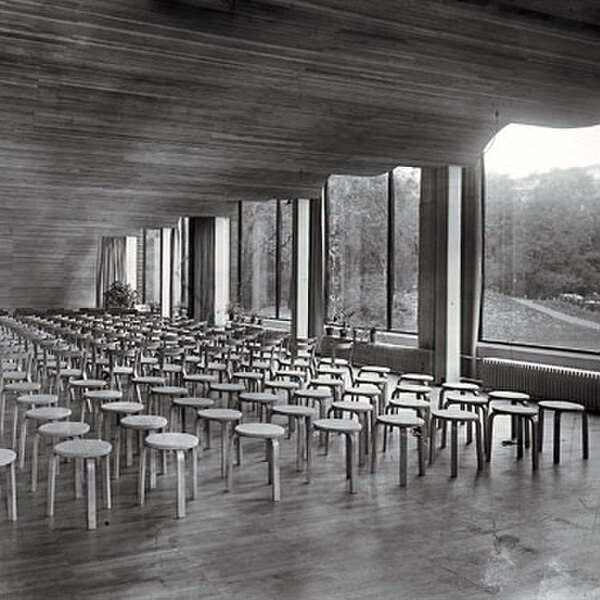Architecture of the night
Architecture of the night or nocturnal architecture, also referred to as illuminated architecture and, particularly in German, light architecture, is architecture designed to maximize the effect of night lighting, which may include lights from within the building, lights on the facade or outlining elements of it, illuminated advertising, and floodlighting.
De Volharding Building, The Hague, 1928 by Jan Buijs, photographed in 1930
Spire of the Chrysler Building, New York, 1930, illuminated in 2005 in a brighter version of the scheme designed by William Van Alen
Titania Palast movie theater, Berlin, 1928 by Ernst Schöffler, Carlo Schloenbach and Carl Jacobi, original exterior lighting by Ernst Hölscher recreated 1995, photographed in 2011
The Louisiana State Capitol lit up at night shortly after its opening in 1932; the lantern adorning the top was built to symbolize the "higher aspirations" of the State of Louisiana.
Architectural lighting design
Architectural lighting design is a field of work or study that is concerned with the design of lighting systems within the built environment, both interior and exterior. It can include manipulation and design of both daylight and electric light or both, to serve human needs.
Play of light inside Jatiyo Sangshad Bhaban
Exterior lighting of the Lloyd's building in London
The predominantly daylit auditorium of the Viipuri Municipal Library in the 1930s
Kimbell Art Museum interior with daylight control and electric lighting design by Richard Kelly (1969)








